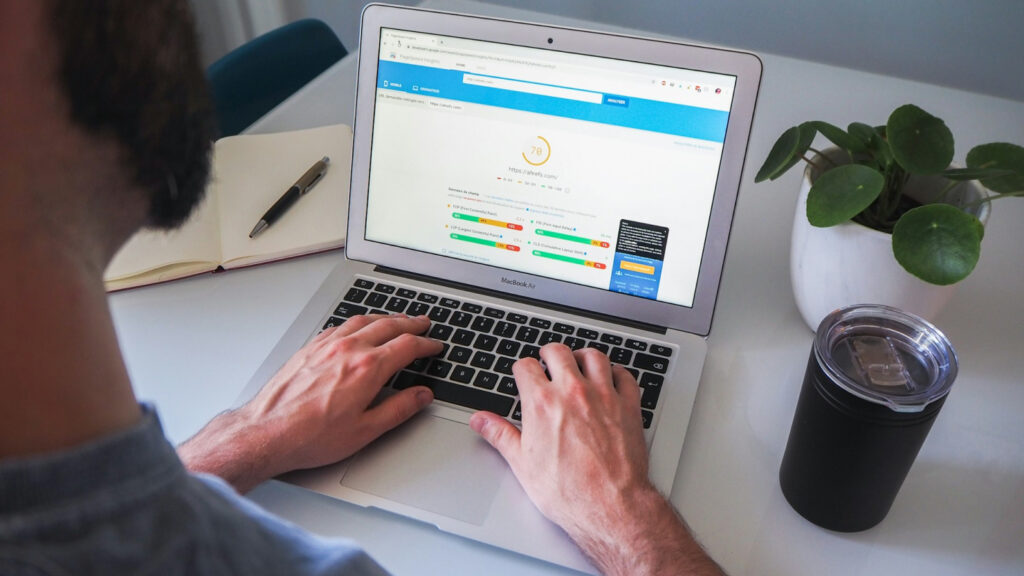
HOME / BLOG / STATISTICS
Website Speed Statistics 2025: 94+ Stats & Insights [Expert Analysis]
- November 5, 2025
- Bill Nash
- 4:54 pm
Table of Contents
Website Speed Statistics
A 1-second delay in page load can reduce conversions by 7%.
53% of mobile users leave a site if it takes longer than 3 seconds to load.
The average mobile webpage loads in 6.3 seconds (Google, 2023).
Websites loading in under 2 seconds have the highest conversion rates.
1 in 2 visitors expect pages to load in 2 seconds or less.
A 100ms delay in load speed can cause a 1% drop in sales (Amazon).
Pages that load in 1 second have 3x higher conversion than pages loading in 5 seconds.
70% of consumers say website speed influences their purchase decision.
Website speed is a ranking factor on Google for mobile and desktop (since 2018).
Slow sites increase bounce rate by 50% or more.
The ideal server response time (TTFB) is 200ms or less (Google).
80% of mobile sites are considered slower than recommended standards.
45% of consumers won’t return to slow websites.
A 2–5 second delay increases bounce probability by +90%.
Improving load time from 3s → 1s can reduce bounce rates by up to 32%.
Faster websites improve organic search performance by up to 15%.
Caching can improve site loading speed by 20–50%.
40% of users leave if images take too long to load.
Lazy-loading images can reduce load time by 30%.
Poor hosting accounts for 37% of slow loading issues.
Sites built with heavy themes load 2–4 seconds slower on average.
Using a CDN can reduce latency by up to 60%.
48% of websites still do not use a CDN in 2025.
Compressing images can reduce file size by up to 80% without quality loss.
Websites using WebP load 25–35% faster than JPEG/PNG heavy sites.
Mobile users are 2x more sensitive to slow load times than desktop users.
Poor mobile speed reduces mobile conversions by up to 50%.
60% of all website traffic comes from mobile devices.
92% of top-ranking pages load in less than 3 seconds.
Faster loading improves user satisfaction scores by +30%.
Website Performance & Business Impact
Websites loading in 1 second convert 5x better than 10-second websites.
73% of visitors leave if checkout pages load slowly.
82% of customers say slow sites reduce brand trust.
Retail sites lose $2.6 billion annually due to slow load times.
A 1-second delay can reduce page views by 11%.
Faster websites experience lower abandonment in form submissions.
SaaS companies report 15–25% more trial sign-ups with faster pages.
Slow mobile experience causes nearly 30% revenue loss in ecommerce.
Core Web Vitals affect ranking and UX scoring.
Faster websites generate higher ad viewability → higher ad revenue.
Core Web Vitals Performance
LCP (Largest Contentful Paint) should be <2.5s for good performance.
First Input Delay should be <100ms.
CLS (Cumulative Layout Shift) should be <0.1.
Only 38% of sites currently pass Core Web Vitals globally.
AMP sites tend to perform 25–35% better on initial paint.
Google prioritizes mobile speed for rankings.
Data-Based Estimates
Blogs load on average in 3.8 seconds.
Ecommerce product pages average 4.9 seconds.
WordPress sites with 20+ plugins are 40% slower than clean setups.
Page builders (Elementor, Divi) increase load by 0.8–2.2 seconds on average.
Removing unused CSS/JS improves performance by 15–40%.
Cheap shared hosting increases load time by 1–3 seconds.
A properly optimized VPS can cut load time by 50%.
Using HTTP/3 reduces latency by up to 30%.
Reducing redirects can speed up loading by 0.3–1.2 seconds.
Gzip/Brotli compression reduces file transfer by 25–60%.
Font loading contributes 10–25% of initial page render delay.
Preloading hero images increases visual load speed by 20–35%.
A well-optimized website can load under 1 second even with heavy visuals.
Websites with frequent traffic caching see 2x faster repeat visits.
Ecommerce Specific
Mobile ecommerce sites lose 30–60% of shoppers to slow pages.
Fast checkout increases completed orders by 12–40%.
Speed improvements have compounding ROI — faster = more visitors convert = more link/traffic growth.
Every +100ms in cart load = higher abandonment.
Fashion & luxury sites are the slowest ecommerce vertical.
Electronics ecommerce tends to optimize speed the most aggressively.
Adding live chat widgets slows load time by 300–700ms.
Removing pop-ups can reduce time-to-interaction by 15–20%.
Auto-rotating sliders are among the most performance-costly elements.
Lighthouse score >90 correlates with higher return customer rates.
User Behavior & Psychology
Users judge website quality within 0.5 seconds.
Slow sites feel less secure to users.
Speed influences brand perception as much as design.
Faster websites create a feeling of smoothness and trust.
Slow load times increase stress response similar to waiting in lines offline.
Technical Speed Factors
Third-party scripts cause 50–80% of performance slowdowns.
Tracking pixels typically add 200–600ms overhead.
Video backgrounds increase load by up to 2+ seconds.
Large hero banners slow LCP more than any other elements.
Unoptimized WordPress themes cause most load issues for small businesses.
Global Speed Comparisons
Websites in the US load faster than those in Southeast Asia by 20–50% on average.
Countries with slower mobile networks show higher bounce rates.
CDNs improve speed more dramatically in regions with slow telecom infrastructure.
Optimization Impact Results
Switching to WebP reduces time-to-interaction by 15–45%.
Eliminating unnecessary plugins can reduce load time by 1–4 seconds.
Preloading fonts improves FCP (first contentful paint) noticeably.
Using Cloudflare often cuts global latency by 30–60%.
Minimizing above-the-fold content reduces full load time.
Conversion Uplift Benchmarks from Speed Improvements
Faster sites see better SEO indexing efficiency.
Speed improvements create compounding conversion benefits over time.
Reducing bounce rate increases email capture success.
Users browse more pages when speed is good.
Faster landing pages improve ad ROAS.
Speed matters more on mobile ecommerce than any other segment.
Faster sites win repeat visitors.
B2B leads increase when page load is smooth.
Brand perception scores increase when load speed improves.
Support tickets decrease because fewer elements break.
Development costs drop when performance is prioritized early.
Speed is one of the highest ROI improvements in digital marketing.
Ready to Grow Your Business?
At Marketing LTB, we specialize in helping businesses like yours thrive online. From strategic digital marketing and branding to web development and social media management, we offer the tools and expertise to elevate your brand and drive real results.
Let’s build something amazing together, get in touch with us today!

About Marketing LTB
Marketing LTB is a full-service marketing agency offering over 50 specialized services across 100+ industries. Our seasoned team leverages data-driven strategies and a full-funnel approach to maximize your ROI and fuel business growth. Discover how our expertise can drive revenue for your business>

About the author, Bill Nash
Bill Nash is the CMO of Marketing LTB with over a decade of experience, he has driven growth for Fortune 500 companies and startups through data-driven campaigns and advanced marketing technologies. He has written over 400 pieces of content about marketing, covering topics like marketing tips, guides, AI in advertising, advanced PPC strategies, conversion optimization, and others.
